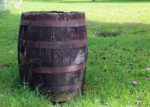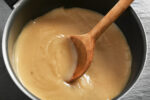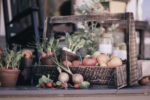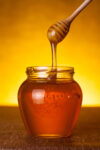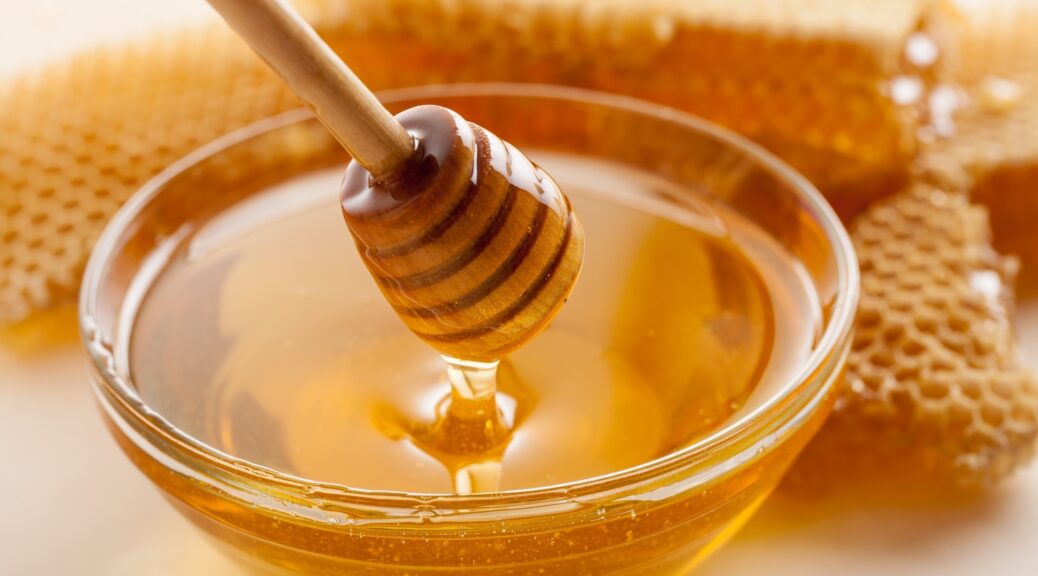
About Honey – Mead, Vinegar, Flavored…
Although honey was a desired sweetener in the 1800s, it was not common in many households. It cost more than sugar or molasses, and most people couldn’t afford it. Some cookbooks published during this time period included recipes on how to make your own (artificial) honey, which was supposed to taste like the real thing.
INFORMATION BELOW COMPILED FROM 1800s COOKBOOKS
Honey is sweeter than white sugar, and molasses is less sweet. When using either of these as a substitute to sugar, one needs to remember that the added liquid will need to be taken into consideration. Reduce liquid about one-fourth cup for every cup of either one used.
Three-fourths cup of honey will be about right for one cup of sugar. One and one-half cup of molasses will be about right for one cup of sugar.
VIRGIN HONEY
The honey produced by young bees, and which flows spontaneously, is purer than that expressed from the comb. The best sort is of a thick consistency and of a whitish color, inclining to yellow. It possesses an agreeable smell and a pleasant taste. Spring honey is better than that made in autumn, and that from clover or other fragrant flowers is better than that of buckwheat.
SEPARATING HONEY
When the combs are removed from the hive, they are taken by the hand into a sieve, and left to drain into a vessel sufficiently wide for the purpose. After it has stood a proper time to settle, the pure honey is poured into earthen jars, tied down close to exclude the air. Honey may also be separated from the comb by placing it in the hot sun or before the fire, with two or three colanders or sieves, each finer than the other, underneath.
SEPARATING HONEYCOMB
The neatest way to separate wax from honeycomb is to tie the comb up in a linen or woolen bag, place it in a kettle of cold water, and hang it over the fire. As the water heats, the wax melts, and rises to the surface, while all the impurities remain in the bag. It is well to put a few pebbles in the bag to keep it from floating.
HONEY VINEGAR
When honey is extracted from the combs by means of pressure, take the whole mass, break and separate it, and into each tub or vessel put one part of combs, and two of water. Set them in the sun or in a warm place, and cover them with cloths. Fermentation takes place in a few days and continues from eight to twelve days, according to the temperature in which the operation is carried on.
During the fermentation, stir the matter from time to time and press it down with the hand, that it may be perfectly soaked. When the fermentation is over, pull the matter from the water to drain on sieves or strainers. Dripping from the mass will be found a yellow liquor, which must be thrown away. This liquor would soon contract a disagreeable smell, which it would communicate to the vinegar.
Then wash the tubs, put in the water that separated from the other original matter, and it will immediately begin to turn sour. The tubs must then be covered again with cloths and kept moderately warm. A pellicle or skin will form on the surface, beneath which the vinegar acquires strength. In a month’s time it begins to be sharp, but must be suffered to stand a little longer, and then put into a cask, of which the bunghole is to be left open. It may then be used like any other vinegar.
COWSLIP MEAD
Put thirty pounds of honey into fifteen gallons of water and boil till one gallon is wasted.* Skim the top of the water and take it off the fire. Have a dozen and a half lemons already quartered, pour a gallon of the liquor boiling hot upon them, and the remainder into a tub, with seven pecks* of cowslip pips.* Let them remain there all night. Then put the liquor and the lemons to eight spoons of new yeast and a handful of sweet-briar.* Stir all well together, and let it work for three or four days. Then strain and turn it into a cask. Let it stand six months, and bottle it for keeping.
*wasted – evaporated.
*pecks – measurement for dry volume; a peck is two gallons or eight dry quarts. Four pecks make a bushel.
*cowslip pips – cowslips are related to the primrose with tiny fragrant yellow flowers (pips).
*sweet-briar – a shrub related to the rose family.
=================================================
~ ARTIFICIAL HONEY ~
The following recipe is equal to bee honey and often mistaken by the best judges to be genuine. It is palatable and luxurious. All persons are more or less aware that honey should be used in every household, and it would be so if every family could have it at a very moderate price.
Recipe: Take two ounces of slippery elm bark, put it into three quarts of warm water, and let it stand four hours. Strain and add eight pounds of white sugar. Boil four minutes, then add one pound of bee honey while hot. Flavor with a drop of peppermint oil and a drop of rose oil.
TOMATO HONEY
To each pound of tomatoes, allow the grated peel of a lemon and six fresh peach-leaves. Boil them slowly till they are all to pieces, then squeeze and strain them through a bag. To each pint of liquid, allow a pound of loaf-sugar* and the juice of one lemon. Boil them together half an hour or till they become a thick jelly. Then put the honey into glasses, and lay double tissue paper closely over the top. It will be scarcely distinguishable from real honey.
*loaf-sugar – sugar sold in a hard block, which has to be broken and then pounded into sugar granules.
LEMON HONEY
Take three large ripe lemons, or four or five small ones, rolling them under your hand on a table to increase the juice. Rub the yellow rind or zest off onto a piece of loaf-sugar, scraping it up with a teaspoon as you proceed, and put it aside on a saucer. Then squeeze the juice of the lemons through a strainer onto a pound of loaf-sugar, (broken small or powdered,) and add the zest or grated rind. Cut up, among the sugar, one-fourth pound of the best fresh butter.
Break six eggs into a shallow earthen pan and beat them till as light as possible. Then gradually mix in the sugar and lemon, stirring all very hard. Put the whole into a porcelain-lined kettle. Set it over a moderate fire that has no blaze, and stirring it all the time, let it boil till it becomes of the consistence of very thick honey. If the weather is warm, you may add to its thickness by stirring in a tablespoon of ground arrow-root, or of sifted flour. When done, put it warm into glass jars, cover them closely, and seal the covers. It will keep in a cool dry place a month or more. If made in winter, it will continue good for two months.
ORANGE HONEY is made as above, except that you must have five or six oranges, all of the largest size, using the juice only and none of the rind. Orange peel will give it an unpleasant taste after it has been kept a few days.
Image from Deposit Photos
=================================================
Do You Use Honey as a Sweetener? Please Leave a Comment Below.
=================================================
